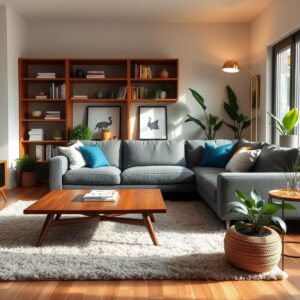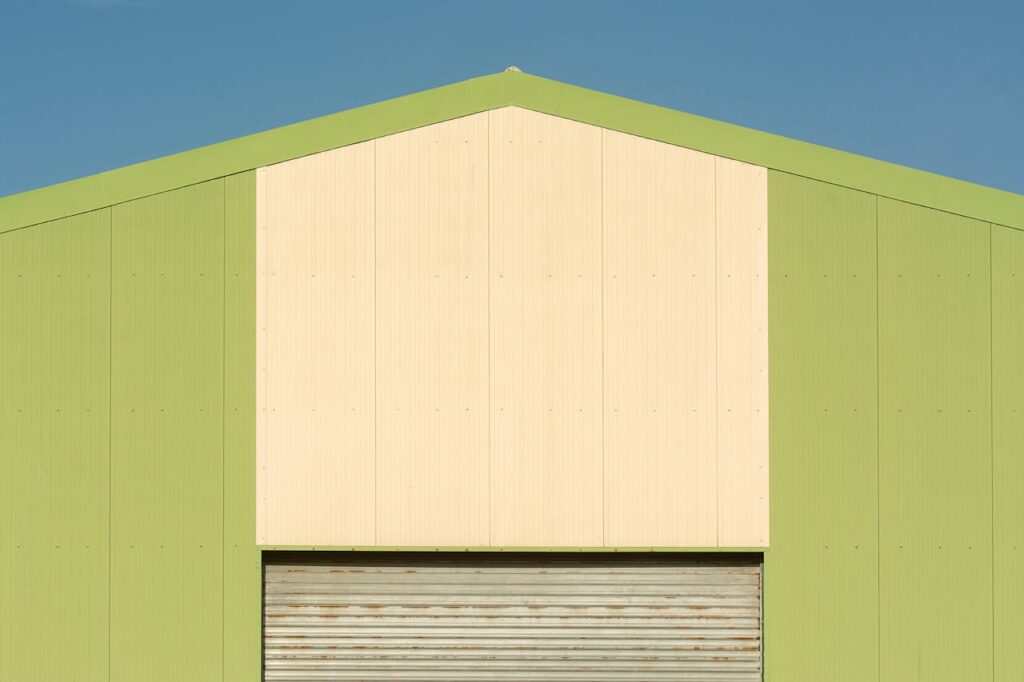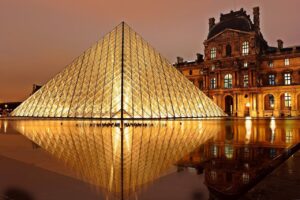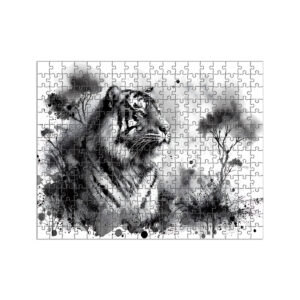
Explore & Play
Discover interesting topics and solve the accompanying crossword puzzle.
Facility Crossword | Multi-purpose space design
Table of Contents
Facility Crossword
You can either fill in the crossword puzzle directly on this page or click the button in the bottom right corner to print it for free.

Designing Multi-Purpose Spaces: From Hospitals to Conference Rooms
The design of multi-purpose spaces has become crucial in today’s fast-paced world, where versatility and functionality are essential for creating environments that meet diverse needs. With the rapid pace of technological advancement, shifting societal demands, and ever-changing user expectations, designing spaces that can serve multiple functions has become an art form.
From hospitals to conference rooms, multi-purpose spaces have emerged as a solution to accommodate various activities within the same space, optimizing both the physical layout and the use of resources. In this article, we will explore the importance of designing spaces that can adapt to a wide variety of needs, examining how these spaces contribute to both private and public life. Additionally, we will reference a crossword puzzle on facilities, illustrating how different elements of space design come together.
1. What Makes a Multi-Purpose Space?
Characteristics of Multi-Purpose Spaces
A multi-purpose space is defined by its ability to serve different functions, providing flexibility for users without compromising comfort or efficiency. These spaces are carefully designed to ensure that they can transform to meet the specific needs of various activities, whether it’s a board meeting, a fitness class, or a community event.
Key characteristics of these spaces include adaptable layouts, advanced technology integration, and the use of versatile furniture. For example, a conference room designed for meetings can be easily transformed into an event space for seminars or workshops. Additionally, the layout can be adjusted with movable partitions, allowing for a more intimate setting or an open-plan design depending on the event.
Design Considerations for Flexibility
Flexibility is at the core of multi-purpose design. Spaces need to be reconfigurable without disrupting the flow of activities. For this reason, modular furniture is often used in many settings, allowing quick rearrangements. Movable walls and partitions further contribute to flexibility by separating different zones of the same space, offering privacy when needed or an open layout for collaboration.
Moreover, technology plays a significant role in these designs. Conference rooms, for example, are equipped with video conferencing tools, large screens, and high-speed internet to ensure smooth communication. Similarly, gyms and wellness centers include advanced exercise equipment that can be adjusted to suit different workout routines, ensuring users have access to a variety of fitness options.
2. Healthcare Facilities: Designing for Efficiency and Comfort
Hospitals
In healthcare facilities like hospitals, the primary goal is to provide care efficiently while maintaining a comforting environment for patients. Hospitals need to serve a wide range of functions—from emergency care to long-term patient treatment. The design of these spaces is centered around the ease of movement, safety, and accessibility.
The floor plans in hospitals are typically designed with various zones in mind, each dedicated to a specific service, such as surgery rooms, patient wards, and emergency departments. The layout should promote smooth patient flow, minimize wait times, and maximize medical staff efficiency. Furthermore, patient comfort is also a priority. Private rooms, calming lighting, and spaces for visitors ensure patients have a sense of privacy and peace while receiving care.
Clinics and Laboratories
Clinics and laboratories are also designed to accommodate various services, from routine check-ups to specialized medical procedures. Multi-purpose clinic rooms often host a range of services, from consultations to diagnostic tests, reducing the need for patients to travel between different areas.
Laboratories, which require specialized equipment, can often be designed with modular setups, allowing them to accommodate different types of testing or research. These facilities require both high-tech tools and an environment conducive to efficiency and innovation.
Gymnasiums and Wellness Areas
Multi-purpose wellness centers, including gyms, yoga studios, and physical therapy areas, are designed to accommodate a variety of fitness programs and rehabilitation services. These spaces are versatile, with open areas for group activities and specialized rooms for personal training or therapy.
These wellness facilities also need to integrate technology to provide feedback on exercises, track health data, and even offer virtual fitness classes. By combining functional layouts with advanced equipment, these gyms can serve as hubs for both physical fitness and wellness services.
3. Education and Work: How Schools and Offices Are Evolving
Schools and Universities
Modern educational institutions are increasingly designed to be multi-functional spaces that can host everything from traditional classes to creative workshops and group discussions. Schools and universities benefit from designs that can adapt to different teaching methods, including lectures, team-based learning, and digital learning environments.
Classrooms have evolved to incorporate flexible seating arrangements, adjustable lighting, and collaborative spaces to support a variety of teaching styles. Furthermore, libraries and common areas are being redesigned to accommodate both individual study sessions and group collaborations, emphasizing versatility and engagement.
Offices and Co-working Spaces
Offices have transformed from traditional cubicles into dynamic, collaborative environments. The modern office needs to support both independent work and team collaboration, while also offering a variety of spaces for different activities. This may include open workspaces, meeting rooms, lounges, and quiet zones, each designed to cater to specific work styles.
Co-working spaces, in particular, are designed with flexibility in mind, allowing businesses to rent space according to their needs. Whether hosting a client meeting or holding a team brainstorming session, these spaces can adapt to various business needs, making them attractive to entrepreneurs and startups.
4. Leisure and Entertainment Spaces: Combining Fun and Function
Stadiums and Arenas
Sports venues, like stadiums and arenas, must not only accommodate athletic events but also cater to large crowds, provide comfort, and serve as hubs for entertainment. Multi-purpose stadiums can host a variety of events beyond sports, such as concerts, corporate events, and community activities.
Designs for these spaces prioritize flexibility, allowing them to quickly transform between different types of events. For example, movable seating and retractable roofs make stadiums versatile, while sophisticated sound systems and lighting ensure that events like concerts or theatrical performances run smoothly.
Theaters and Performance Spaces
Theaters are another excellent example of multi-purpose design, as they must host a range of performances, from plays and musicals to conferences and film screenings. Designers must balance acoustics, seating arrangements, and the stage layout to accommodate both intimate performances and large productions.
By using modular seating and adjustable stage setups, theaters can serve a variety of audiences and performance types. These adaptable spaces are also often equipped with advanced lighting and sound technology to support diverse events.
Fitness Centers and Swimming Pools
Fitness centers and swimming pools are perhaps the most multi-functional leisure spaces of all. These facilities not only provide space for exercise but also host fitness classes, community events, and even therapy sessions. They can also accommodate multiple types of sports and physical activities, from swimming to weightlifting.
The design of these spaces focuses on creating zones that cater to different fitness needs. Pools, gyms, and yoga studios are often separated into distinct areas, each equipped with specialized equipment to enhance the user experience.
5. Commercial and Public Spaces: From Hotels to Airports
Hotels and Resorts
Hotels and resorts are classic examples of multi-purpose spaces, providing accommodations, dining, and recreation in a single location. The versatility of hotel spaces is key to serving both business and leisure travelers. Conference rooms, spas, and restaurants are all housed within the same facility, offering services to meet various guest needs.
For example, a conference room in a hotel may be used for corporate meetings during the day and transformed into a banquet hall for events or weddings in the evening. These spaces must be designed with flexibility and multi-functionality in mind.
Airports and Transportation Hubs
Airports are often multi-purpose spaces that combine travel, shopping, and leisure. Beyond being a transit hub, an airport serves as a venue for dining, shopping, and entertainment, offering passengers a variety of services before their flights.
Designing airports to accommodate multiple functions requires careful planning of flow and zoning, ensuring that passengers can move efficiently between terminals, security, and amenities. The ability to adapt to different traffic volumes and passenger needs is key to a successful airport design.
Museums and Libraries
Museums and libraries have long been places of education and culture, but today, these spaces have evolved into multi-purpose facilities that host events, workshops, and community activities. Museums, for instance, are increasingly incorporating technology to create interactive exhibits, while libraries offer quiet reading areas alongside spaces for meetings or community gatherings.
6. The Role of Technology in Designing Multi-Purpose Spaces
Smart Building Features
The integration of technology into multi-purpose spaces has transformed how these areas are designed and used. Smart technology allows for seamless adjustments to lighting, temperature, and security, enhancing both the user experience and building efficiency.
For example, conference rooms are equipped with video conferencing tools, smart boards, and cloud-based storage systems, allowing users to connect globally with ease. Gyms and wellness centers also integrate technology to monitor health metrics, manage bookings, and provide personalized experiences.
Tech in Entertainment and Leisure
In entertainment and leisure facilities, technology plays an essential role in creating immersive experiences. From augmented reality in museums to interactive sound systems in theaters, technology enables venues to offer engaging experiences that are tailored to the audience.
Additionally, fitness centers use technology such as virtual classes and tracking devices to help users reach their fitness goals. These advancements contribute to the versatility of multi-purpose spaces.
7. Sustainable Design in Multi-Purpose Facilities
Energy Efficiency and Green Design
Sustainability is a top priority in the design of multi-purpose spaces. Today, eco-friendly design principles are applied in everything from energy-efficient lighting systems to the use of sustainable building materials. Incorporating green features helps minimize the environmental footprint of these spaces while providing a healthier environment for users.
For instance, using natural light in office spaces and hospitals reduces the need for artificial lighting, which can reduce energy consumption. Green roofs and energy-efficient HVAC systems are commonly seen in modern multi-purpose buildings, reducing overall energy costs.
Recycling and Waste Management
Waste management is another crucial aspect of sustainable facility design. Multi-purpose spaces, like stadiums and shopping malls, often host large crowds and need efficient systems for handling waste. Recycling stations, composting facilities, and waste reduction programs are incorporated into these designs to ensure sustainability.
Creating Green Spaces
Designing green spaces within multi-purpose facilities enhances both the aesthetics and the functionality of these spaces. Outdoor areas, such as rooftop gardens, can serve as relaxation zones, providing users with a peaceful escape from the hustle and bustle of the city.
8. The Future of Multi-Purpose Spaces: Trends to Watch
Flexible and Adaptive Spaces
The future of multi-purpose spaces will see even more adaptability and flexibility. As the needs of users evolve, spaces will need to be able to change quickly, transforming for different purposes without requiring significant renovations.
For instance, conference rooms may need to become classrooms, or office spaces might need to double as event venues. Modular designs, advanced technology, and reconfigurable furniture will ensure that these spaces can accommodate a variety of needs.
The Rise of Mixed-Use Developments
Mixed-use developments are gaining popularity, with residential, commercial, and recreational spaces integrated into one location. These developments offer convenience and community, with facilities that serve all aspects of modern life. For example, a building may feature apartments, shops, gyms, and restaurants all within the same structure.
Post-COVID Design Trends
The COVID-19 pandemic has had a profound effect on how spaces are designed. Post-pandemic, there will be greater emphasis on designs that promote health and safety, such as enhanced ventilation systems, larger meeting rooms with physical distancing, and touchless technologies.
9. Designing for Versatility: The Future of Facility Design
Designing multi-purpose spaces that cater to diverse needs requires a delicate balance of function, flexibility, and user experience. These spaces need to be adaptable to both present and future demands, ensuring that they remain useful and relevant over time.
The future of multi-purpose spaces lies in their ability to evolve with the changing landscape of society. With the integration of technology, sustainable practices, and flexible designs, these spaces will continue to meet the needs of businesses, communities, and individuals for years to come.
Share to...
I hope you enjoy the content.
Want to receive our daily crossword puzzle or article? Subscribe!
You may also be interested in
Share to…
Want to receive our daily crossword puzzle?
-
Jigsaw Puzzles
Zodiac Series Tiger Ink Puzzle – Black and White Art 250 | 300 | 500 Pieces
kr 348,00 – kr 439,00Price range: kr 348,00 through kr 439,00 Select options This product has multiple variants. The options may be chosen on the product page -
Jigsaw Puzzles
Zodiac Ink Dog Puzzle: Artful Elegance 250 | 300 | 500 Pieces
kr 348,00 – kr 439,00Price range: kr 348,00 through kr 439,00 Select options This product has multiple variants. The options may be chosen on the product page -
Jigsaw Puzzles
Nordkapp Abstract Art Jigsaw Puzzle 250 | 300 | 500 Pieces
kr 348,00 – kr 439,00Price range: kr 348,00 through kr 439,00 Select options This product has multiple variants. The options may be chosen on the product page

















